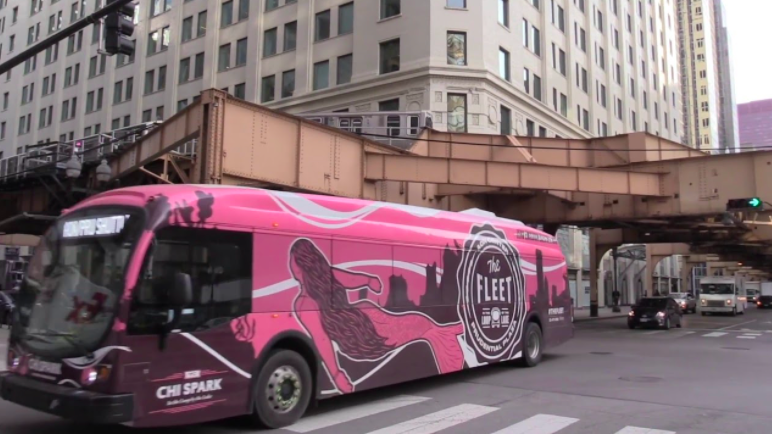CTA’s transition to fleet of electric buses arriving on schedule
A painted Proterra electric CTA bus moves through the heart of the city (Image: Luke Starkenburg / YouTube)
Local commuters know that Chicago Transit Authority (CTA) buses are not always as prompt as we would like it to be. This makes it all the more impressive that their long-awaited transition to a fleet of electric busses has been running nicely along schedule.
The city announced their plan in January this year to eventually convert all buses to be electric-powered by 2040. The rollout began in April of this year, with nine buses in tow.
The buses are outfitted by Proterra, a leader in clean public transportation, and go for $900,000 per bus. In May, Proterra announced the addition of six more busses, bringing the total number to 23 - already one of the largest in the country.
In June, the U.S. Department of Transportation announced $182 million in funding towards cleaner buses for public transportation as part of the Low- or No- Emission Grant Program, with the aim to reduce emissions by 50 percent in the next 10 years.
Seven million dollars is going directly to the CTA, specifically towards building a bus re-charging station on the South Side of the city, and towards funding employee training on how to transition from traditional to green technologies.
These new buses will replace the city's oldest diesel ones, and should have a direct effect on communities that have been the most affected by disproportionate air pollution.
With over 2,000 operating busses, Chicago has one of the largest public transportation systems in the U.S.
Five electric quick-charging stations have been outfitted for the new busses, located at Navy Pier, the Chicago Avenue garage, and the Chicago/Austin bus turnaround points. These overhead chargers give 75-125 miles per charge and work without the busses needing to stop, so routes won’t need to be paused or interrupted for routine maintenance.


